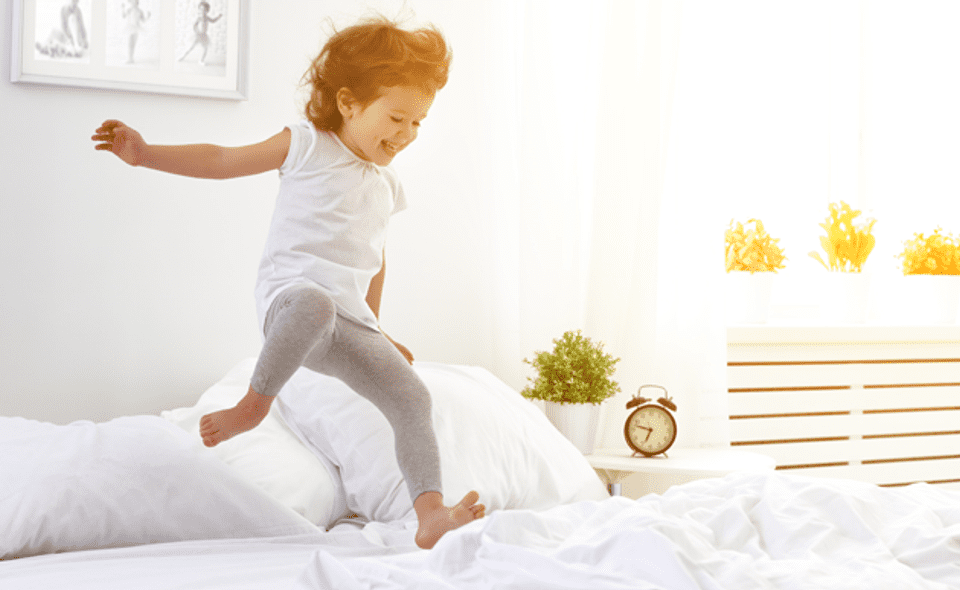Science of Sleep: The Benefits of Natural Light
Our bodies are amazing and incredibly complex things, especially when it comes to falling asleep. And with so many different things that can help or hinder our sleep it can be difficult to know what things we can do to aid it.

For example, you might think that introducing light would keep us awake but, if we’re using the right type of light, we can create the perfect way to activate our natural body clock and get those all-important Zzz’s in.
We’ve teamed up with Lumie who make light therapy lamps and alarm clocks to ask them how natural light can impact our body clocks and how to introduce natural light into your bed time routine to help you fall to sleep.
Malgo Dzierugo at Lumie explains:
WHAT IS OUR BODY CLOCK AND HOW DOES IT WORK?
CIRCADIAN RHYTHMS & SLEEP
“Life on Earth has adapted to the planet’s 24-hour rotation and the human biological rhythm is also “circadian”, meaning it’s about as long as a day, normally entrained to the 24-hour light-dark cycle. Light is the main ‘zeitgeber’ (German, time giver) and it keeps our circadian rhythms on track so that our daily rhythms (i.e. when we eat and sleep) are aligned. In addition, cortisol secretion (sometimes more commonly known as the stress hormone) and the rise in core body temperature take place in daytime, whereas melatonin secretion (a hormone that regulates sleep-wake cycles) and sleep take place during the night.
“The quality, timing and length of sleep are dependent upon an interaction between the circadian rhythm and 'sleep monitor' (called the sleep homeostat). The sleep homeostat essentially acts like an egg timer in our brain and tracks how long we are awake by a build-up of sleep pressure (think of sand filling up the egg timer). The longer we are awake the greater the sleep pressure (or fuller the timer) and when we go to sleep this pressure disappears (timer turns over and empties) ready to begin again when we awake.
“Particular groups of cells in the brain, and the substances they produce, are involved in maintaining a wake state whilst other groups of cells can produce substances to oppose this and induce sleep. Our modern lifestyles and 24/7 activity all year round, combined with the lack of sufficient exposure to natural daylight and over-exposure to blue-light emitting devices (often found in technology such as mobile phones) too late in the day, confuse our body clocks immensely, leading to insomnia and increased fatigue.
HOW TO USE NATURAL LIGHT TO HELP YOU SLEEP
MANAGE ENERGY THROUGHOUT THE DAY
“Keeping a regular sleep/wake cycle and getting plenty of sleep at night are the best and natural prerequisites for maintaining healthy levels of energy throughout the day. Sleep-deprived people are more likely to experience fatigue in the afternoons so it’s worth considering using a light therapy solution to help get a better night’s sleep.
“Using something like a sleep/wake-up light will help keep your body clock aligned with the 24-hour day. But how so? Well, devices such as a Lumie Bodyclock® have been designed to minimise blue-lights that can often keep you awake by reducing the brightness of its light to a gentle warm colour at night-time. By doing this it encourages a natural sleep response as the fading light serves as a cue for our bodies to increase the production of sleep hormones (such as melatonin). The following morning the wake-up light will help you to stir with the simulation of a gradual sunset.
“Waking up this way has been shown to improve the quality of awakening, mood and energy levels. This dawn simulation prepares your body for the wake-up call before you even know it by picking up the slowly increasing levels of light through your closed eyelids. This in turn signals your brain to start suppressing melatonin and allow for the ‘get up and go’ hormones to kick in (such as cortisol, the secretion of which peaks at 6 - 8am). As a result, when you actually do open your eyes, you feel properly awake and much more ready to take on the day.
“Bright light has been shown to immediately increase levels of alertness, boost mood and improve performance. For optimum mood and energy, we all need light as bright as a spring morning for at least 30 minutes and this should be a minimum of 2,000 lux (the technical measure of brightness). That's roughly four times brighter than a well-lit office! So if you are feeling sleepy during the day because of not being able to sleep well at night, then having a light box (such as our Vitamin L) on your desk at work could directly help to improve the way you are feeling.
“And misaligned circadian rhythms can potentially lead to far worse outcomes than just a post-lunch slump. A Lancet Psychiatry study of 91,000 people found a disrupted body clock was linked with higher rates of major depression, bipolar disorder, loneliness, a decrease in happiness, reduced reaction times and more mood instability.
“With this in mind, I’d like to leave you with the food for thought that seemingly small changes – such as introducing light therapy devices to our routines – can have a huge, often life-changing effect on your sleep pattern and therefore your overall health, wellbeing and happiness, so consider weaving one in to your routine to help you get a better quality sleep.”

